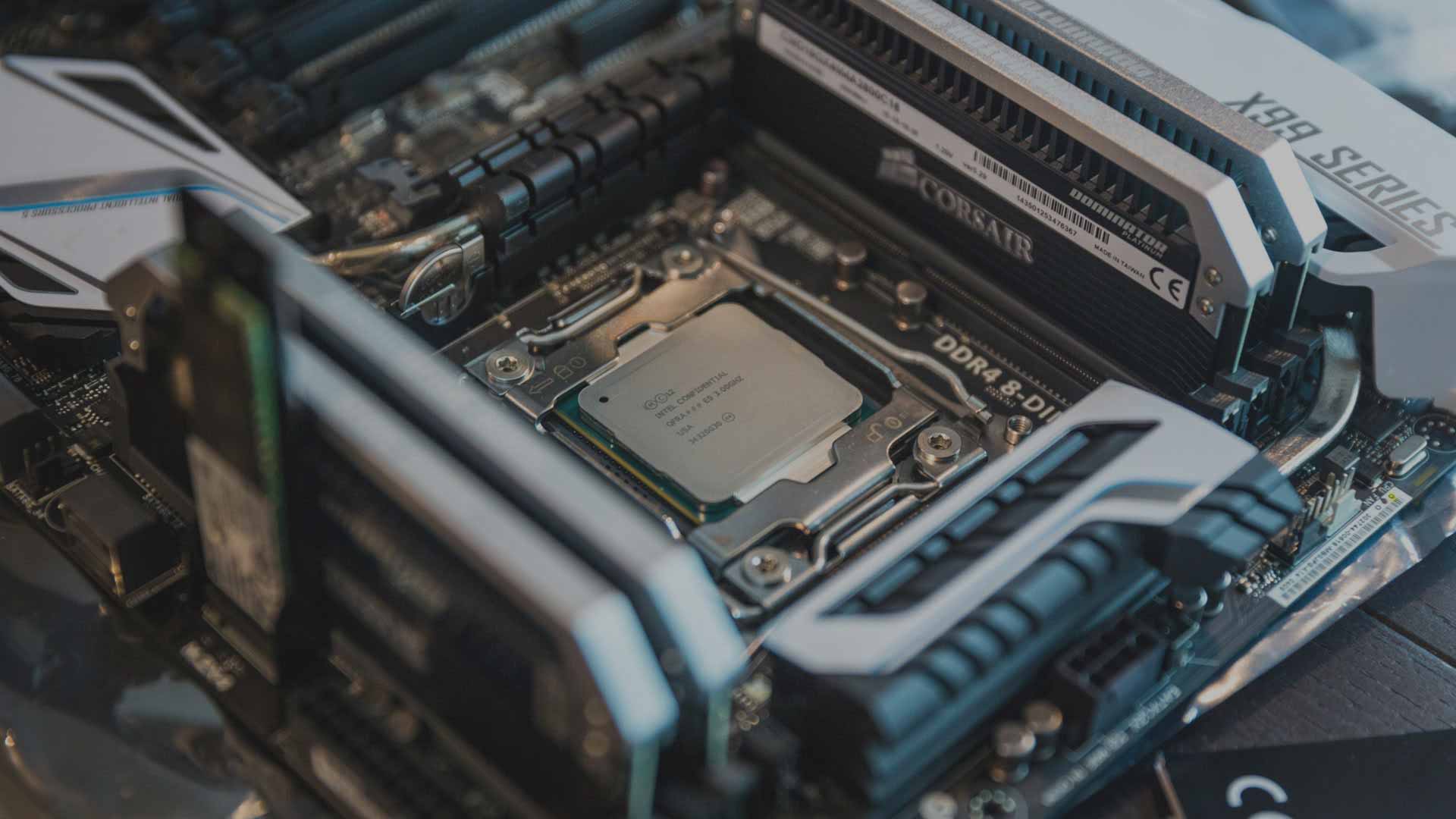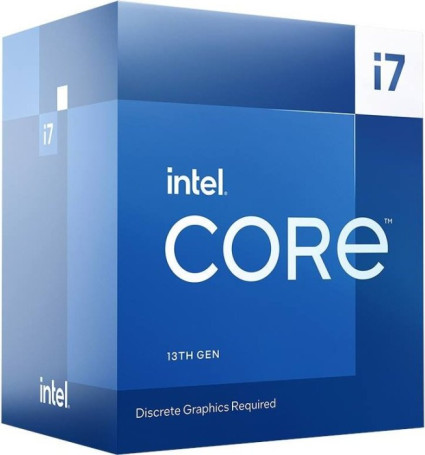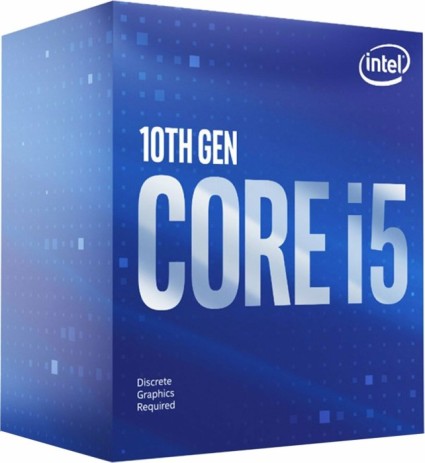
Intel Core i7-13700F vs. Intel Core i5-10400F (G1)
In diesem Vergleich von Intel Core i7-13700F versus Intel Core i5-10400F (G1) vergleichen wir die technischen Daten der beiden GPUs. Welche Grafikkarte ist schneller? Hier gibt es FPS & Benchmarks in Gaming und Anwendungen. Außerdem Daten zu Verbrauch, Effizienz (FPS pro Watt) und Preis-Leistung (FPS pro Euro).

Allgemeine Informationen
| Günstigster Preis |
|
|
| Serie | Intel Core i-13000 | Intel Core i-10000 |
| Chip-Architektur | Raptor Cove (P-Core) + Gracemont (E-Core) | Comet Lake |
| Codename | Raptor Lake-S | Comet Lake-S |
| Produktname | Intel Core i7-13700F | Intel Core i5-10400F (G1) |
Spezifikationen
Die Anzahl der Rechenkerne, die maximale Taktrate und die Größe des Cache können sich auf die Leistung in Spielen und Anwendungen auswirken. Mit 16 Kernen bietet der Intel Core i7-13700F deutlich mehr Kerne als der Intel Core i5-10400F (G1) mit 6 Rechenkernen. Der maximale Takt liegt beim Intel Core i7-13700F mit 5.20 GHz höher als beim Intel Core i5-10400F (G1) mit 4.30 GHz. Der Cache ist beim Intel Core i7-13700F mit 24 MB L2-Cache + 30 MB L3-Cache zu 1.5 MB L2-Cache + 12 MB L3-Cache deutlich höher als beim Intel Core i5-10400F (G1).
| Kerne (Gesamt) | 16 | 6 |
| Anzahl P-Cores | 8C | 6C |
| Anzahl E-Cores | 8c | - |
| Basis-Takt | 2.10 GHz | 2.90 GHz |
| Takt P-Cores | 2.10 GHz | 2.90 GHz |
| Takt E-Cores | 1.50 GHz | - |
| Turbo-Takt | 5.20 (Turbo Boost Max 3.0) GHz | 4.30 GHz |
| Turbo P-Cores | 5.20 (Turbo Boost Max 3.0) GHz | 4.30 GHz |
| Turbo E-Cores | 4.10 GHz | - |
| Gesamter L2-Cache | 24 MB | 1.5 MB |
| Gesamter L3-Cache | 30 MB | 12 MB |
| Fertigung | Intel 7 | Intel 14 nm++ |
| Rechenleistung | - | - |
| Leistungsaufnahme (TDP) | 65W (Processor Base Power) 219W (Maximum Turbo Power) |
65W |
Mainboard-Kompatibilität
Während der Intel Core i7-13700F den Intel 1700 Sockel nutzt, ist der Intel Core i5-10400F (G1) mit Mainboards für den Sockel Intel 1200 kompatibel. Die genaue Chipsatz-Eignung und die unterstützten PCIe-Lanes können Sie der Tabelle entnehmen.
| Sockel | Intel 1700 | Intel 1200 |
| Chipsatz-Eignung | B660, B760, H610, H610E, H670, H770, Q670, Q670E, R680E, W680, Z690, Z790 | B460, B560, H410, H470, H510, H570, Q470, W480, Z490, Z590 |
| PCIe-3.0-Lanes | - | 16x |
| PCIe-4.0-Lanes | 4x | - |
| PCIe-5.0-Lanes | 16x | - |
RAM-Kompatibilität
Während Sie beim Intel Core i7-13700F bis zu 192 GB vom Typ DDR4/DDR5 im Dual Channel verbauen können, unterstützt der Intel Core i5-10400F (G1) bis zu 128 GB DDR4 Arbeitsspeicher.
| Speicher-Controller | DDR4/DDR5 | DDR4 |
| Anzahl Speicherkanäle | Dual Channel | Dual Channel |
| max. Speichermenge | 192 GB | 128 GB |
| ECC-Unterstützung | - | - |
Grafik
| iGPU | - | - |
| iGPU-Modell | - | - |
| iGPU-Takt | - | - |
| iGPU-Einheiten | - | - |
| iGPU-Rechenleistung | - | - |
| iGPU-Architektur | - | - |
| iGPU-Interface | - | - |
| iGPU-Funktionen | - | - |
Sonstiges
| Freier Multiplikator | - | - |
| Stepping | B0, Spec Code: SRMBB | G1, Spec Code: SRH3D/SRH79 |
| Heatspreader-Kontaktmittel | Metall/verlötet | Wärmeleitpaste |
| Temparatur max. | 100°C (Tjunction) | 100°C (Tjunction) |
| Fernwartung | - | - |
| Einführung | 2023/Q1 (3.1.2023) | 2020/Q2 |
| Herstellergarantie | 5 Jahre bei Intel® Boxed-Prozessoren durch erweiterte Garantieunterstützung (Info EN) | 3 Jahre bei Intel® Boxed-Prozessoren (Info DE/Info EN) |
CPU-Funktionen
| AES-NI | ✓ | ✓ |
| AVX | ✓ | ✓ |
| AVX2 | ✓ | ✓ |
| Boot Guard | ✓ | ✓ |
| CET | ✓ | - |
| DL Boost | ✓ | - |
| EIST | ✓ | ✓ |
| GNA 3.0 | ✓ | - |
| Idle States | ✓ | ✓ |
| Instruction Set | ✓ | ✓ |
| ISM | ✓ | - |
| MBEC | ✓ | - |
| Optane Memory Support | - | ✓ |
| OS Guard | ✓ | ✓ |
| Secure Key | ✓ | ✓ |
| Speed Shift | ✓ | - |
| SSE4.1 | ✓ | ✓ |
| SSE4.2 | ✓ | ✓ |
| Thermal Monitoring | ✓ | ✓ |
| VMD | ✓ | - |
| VT-d | ✓ | ✓ |
| VT-x | ✓ | ✓ |
| VT-x EPT | ✓ | ✓ |
| XD Bit | ✓ | ✓ |

